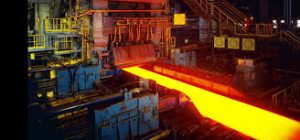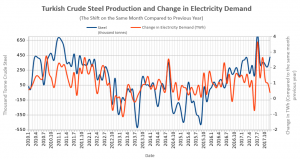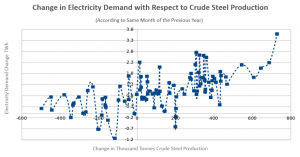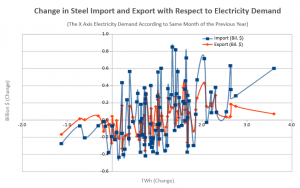 SUMMARY:
SUMMARY:
One of the most prominent energy consumers in Turkey are iron-steel industries. It is, therefore, natural for steel production and related economies to directly affect electricity demand. This Q report will examine the relationship between steel production, import and the electricity demand change. Steel import is an interesting measure in this regard. Because while scrap steel is imported on one side and a portion of the produced steel is also exported. Steel production has a direct positive relationship with electricity demand. But the import and export is a bit more complicated. Because imports and exports in steel are nested in one another.
METHOD:
The data to bring together steel and monthly electricity statistics was obtained through a plethora of pdf sources. Because World Steel Association (WSA) data is available on a yearly basis on pdf, Turkey’s annual crude steel figures were derived one by one from different files. The total sum figure for the year 2016 of WSA did not match with the 2017 figures offered by the Turkish Steel Producers Association (TÇÜD). All crude steel thousand tonnes production figures were taken from the WSA pdfs. Then, with the data taken from Turkish Statistical Institute’s (TÜİK) foreign trade statistics regarding the relationship between export-import-net imports (harmonized classification of US $ 72 billion), its relation to electricity demand was studied. Correlation analyses are also available in the ODS file. Although TEİAŞ data was taken from TEİAŞ web page, it was entered manually due to file protection. The compared data is the shifts in the same months of the previous year.
ANALYSIS:
First, the relationship between crude steel production and electricity demand was analysed with a two axis graph. Then, the raw steel production figures which form the x-axis were sorted and examined by a x-y graph.

The decline in crude steel production appears to be almost constantly pulling down demand for electricity. Each monthly 0.5 million tons increase in production of crude steel can be seen to have exerted 1 TWh more than in demand of the same month of the previous year.

Steel imports and exports (in billion $) and electricity demand are somewhat complicated. If we consider that a significant part of the steel industry’s production is made with electric arc furnaces (EAF) and that a significant portion of the scrap used in these furnaces is also imported, it should not be surprising that the electricity demand is related to both imports and exports.

In the comparison between the same month of the previous year, there is a rough correlation of 0.45 between steel exports and electricity demand. This appears to be 0.43 in imports.
CONCLUSION:
Steel production, import and export in Turkey is in a way related to electricity demand change. This Q-reports studied these links. Because the import and export data taken to HS72 covers also the scrap steel purchases the increase in electricity demand is related both to steel imports and exports. The data in this report had be checked constantly as Turkey almost always appears as a net importer in HS72. The result of this report is that the growth in electricity demand can also be a signal of increasing imports.
